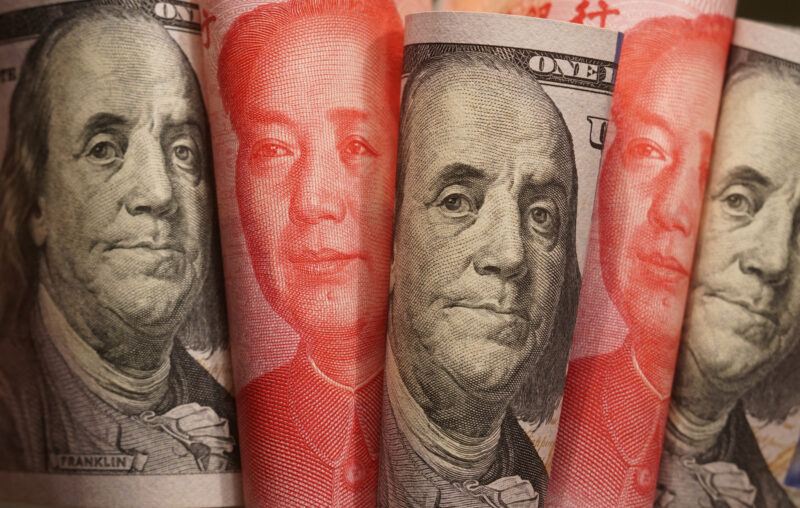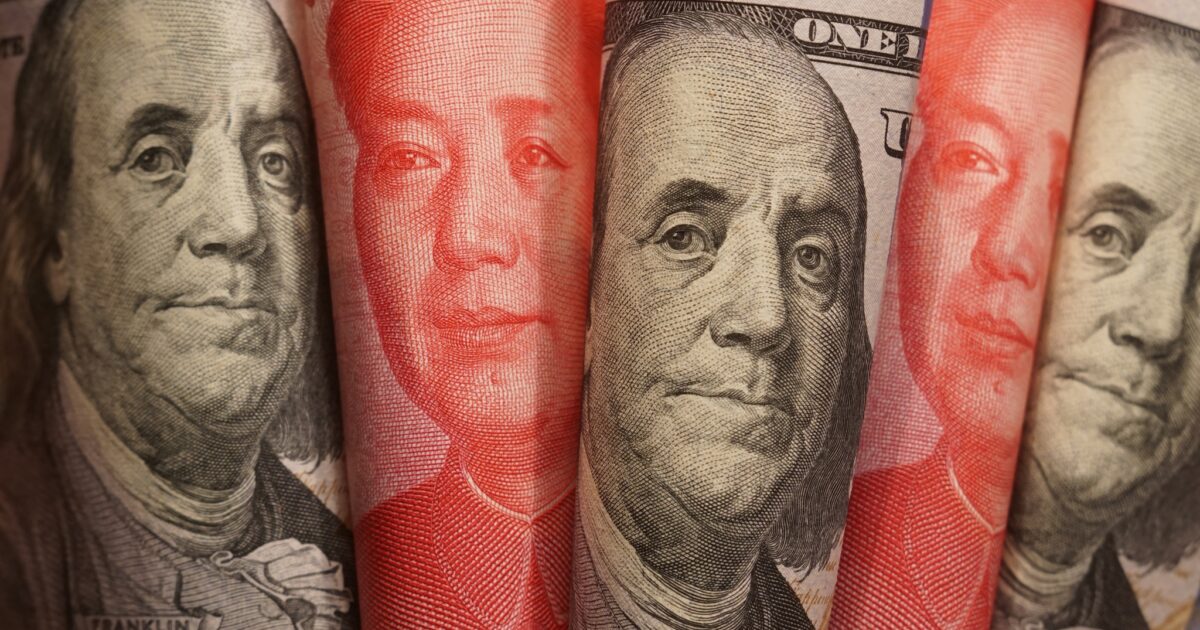
Amid the challenges posed by Russia’s war against Ukraine and China’s increasing assertiveness in Asia, the G7 met in Europe. Most of the hard work was completed by staff before the political leaders gathered. Even so, some of the ideas advanced remained half-baked at best, such as the Partnership for Global Infrastructure and Investment initiative, apparently a Biden administration brainchild. It is supposed to uplift developing countries, create jobs in industrialized nations, and provide a return on private investment. Next up: achieving global peace and making the lion and lamb lie down together!
Driving the PGII is “the China threat.” The People’s Republic of China supposedly is about to take over the world with its Belt & Road Initiative. Poor nations will be impoverished through “debt-trap” diplomacy, the PRC will control vital projects around the world, and facilities with military uses will be constructed covertly. Thus, the US and West must respond, tossing their people’s money at the same sort of overseas projects, saving the foolish and irresponsible locals from themselves and defeating the Chinese communists.
It is a dubious idea in the best of circumstances.
Beijing should not be underestimated, but it is not the 800-pound gorilla often portrayed. Political interference in the economy is rife, government enterprises swallow vast resources, banks are saddled with heavy debt, a property bubble threatens, young people increasingly want to leave the PRC, draconian COVID restrictions undermine regime support, and the rapidly aging population poses potential demographic and economic disaster. Despite the expectation that Xi will win a third term as president, his political position could be simultaneously on the mountaintop and at the abyss, as dissatisfaction rises over endless COVID lockdowns.
However ambitious the PRC’s BRI program might have originally been, Beijing appears to have moderated its expectations. Focusing on developing states whose governments tend to be both authoritarian and dirigiste limits the likelihood of well-developed and -managed projects. Moreover, argued the University of Tennessee’s Sara Hsu, there is “no evidence that Chinese banks over-lend or invest in loss-making projects to obtain a foothold in those countries.”
So far the PRC has not amassed a network of foreign bases, and Chinese business practices have generated various forms of blowback in nations as diverse as Malaysia, Zambia, Sri Lanka, Pakistan, and Burma/Myanmar. Indeed, many nations have suffered through an “Ugly Chinese” syndrome akin to the fabled “Ugly American” during the Cold War. BRI is not the geopolitical juggernaut that many in the West feared.
Alas, President Joe Biden appears committed to his earlier plan of fighting inflation by spending more money. The idea of delivering a foreign financial bonanza came to him a year ago. According to the White House fact sheet:
At the 2021 G7 Summit, President Biden and G7 leaders announced their intent to develop a values-driven, high-impact, and transparent infrastructure partnership to meet the enormous infrastructure needs of low- and middle-income countries and support the United States’ and its allies’ economic and national security interests. Over the past year, members of the Administration have traveled to hear directly from countries on how we can meet their infrastructure needs, deepened our coordination across the U.S Government and with the G7, honed our infrastructure investment tools, and closed game-changing deals.
What did all this alleged listening yield?
The White House, along with the rest of the G7, announced “the Partnership for Global Infrastructure (PGII) to mobilize hundreds of billions of dollars and deliver quality, sustainable infrastructure that makes a difference in people’s lives around the world, strengthens and diversifies our supply chains, creates new opportunities for American workers and businesses, and advances our national security.”
America’s five-year, $200 billion is supposed to come “through grants, federal financing, and leveraging private sector investments” and be supplemented with “additional capital from other like-minded partners, multilateral development banks, development finance institutions, sovereign wealth funds, and more.” The other G7 nations are to kick in another nearly $400 billion over the same time. The money is to focus on four main priorities: “Tackling the climate crisis and bolstering global energy security,” “Developing, expanding, and deploying secure information and communications technology (ICT) networks and infrastructure,” “Advancing gender equality and equity,” and “Developing and upgrading the infrastructure of health systems and contributing to global health security.”
Moreover, emphasized the President when announcing the initiative, “This isn’t aid or charity. It’s an investment that will deliver returns for everyone including the American people and the people of all our nations and will boost all of our economies.” Apparently, everybody wins. And without any risk to anyone. We finally have a get-rich scheme that everyone can believe in!
To top it off, the program is to sell democracy and defeat autocracy. The President grew close to animated at the G7 press conference, insisting that “when the democracies demonstrate that we can do all that we have to offer I have no doubt that we will win the competition every time.” He didn’t name America’s presumed rival, but everyone knew it was China.
This all sounds great in theory. However, as Gertrude Stein said of Oakland, there’s no there there. Or as former vice president Walter Mondale mimicked a then-famous hamburger ad, asking a political competitor “where’s the beef” in response to the latter’s claimed new ideas.
The problems are many. First, PGII is a retread idea. It began last year as Build Back Better World, intended to match the administration’s big domestic spending plan, which crashed and burned. Recognizing that Republican opponents were unlikely to warm to a similarly named international effort, and foreign governments wouldn’t want to be seen as supporting a partisan political program, the administration put its old initiative into new wineskins.
Second, the new name and formal announcement appear to be all officials came up with after a year of thinking, traveling, and listening. Really. One unnamed “senior administration official ”told National Public Radio: “it’s been a year … of going out and doing the hard work of bringing this statement of intent into being” with various global partners. Apparently the most important job over that year was writing up the five-page “fact sheet.”
The hard work of drafting a statement? That’s it. Neither names nor commitments are offered. Where did the estimates of $200 billion and $600 billion come from? How will financial contributions be enforced? International aid conferences routinely meet, with generous promises of assistance offered. Yet even these commitments, made to some of the most desperate people on earth, often go unmet.
Third, PGII isn’t just unfinished. It appears to have barely begun. The administration and other G7 members don’t even pretend to have developed something new. Rather, they corralled some existing projects. They called on some existing agencies. They pointed to some existing pots of money. And they predicted that a bunch of existing, though unnamed, public agencies and private funds would join in. Then they predicted fantastic projects not yet identified, let alone created. And they indicated everything would be subject to criteria not yet developed. With returns not yet demonstrated.
Fourth, it’s hard to beat someone with nothing. Beijing adapted BRI to economic and political reality over time, providing real funds for real projects, though with varying results. Past US efforts to confront China’s program achieved little. Poor countries want funds, not what appears to be self-serving US criticism of Chinese funds.
Liberian Gyude Moore, now at the Center for Global Development, observed: “Looking back at what we’ve seen, every iteration of an American-led response to the Chinese infrastructure project has underperformed.” The bottom line in the infrastructure derby is simple: as much money on as generous terms as possible. The PRC has put more money on the table. Said Michael Shifter, formerly of the InterAmerican Dialogue: “Countries are in dire straits. They need resources. There are opportunities the Chinese are offering and the U.S. can’t match those.”
Fifth, how will all these grand unidentified investments “deliver returns for everyone,” as the President insisted? If so many peerless projects of sound social and economic design exist, why haven’t they been funded already? The World Bank, Asian Development Bank, Inter-American Bank, African Development Bank, and European Bank for Reconstruction and Development are busy. So are dozens of aid agencies throughout the developed world. Governments maintain sovereign wealth funds. And vast amounts of private capital are looking for overlooked economic jewels. What added value are government bureaucracies across the G7 going to add?
Sixth, if the plan is all about private funding, what is government’s role? National Security Adviser Jake Sullivan explained that “What we’re really trying to stimulate is a long-term economic relationship rooted in private sector investment—not in massive cash transfers from the American Treasury to these countries.” He added: “That means taking relatively smaller amounts of money and leveraging significant private sector investment to add up to billions and ultimately tens of billions of dollars.”
However, the private sector could invest now. What is the government leveraging to bring in otherwise unavailable private money? What will make private investors enter these markets now, in contrast to then? Taxpayer subsidies? Then the returns won’t be real.
Seventh, if the real plan is to underwrite projects with less than stellar economic prospects of the sort long backed by the multilateral development banks and governments, how realistic is it to expect “returns for everyone”? Why predict better outcomes than from past economic development aid? What of the Millennium Challenge Corporation, unveiled in 2004 with great fanfare as a new means to better aid global development? What evidence is there of a paucity of money for quality projects? Overall, the record of economic aid is poor. There is little evidence that much good would come from the US and Europe’s tossing good money after bad provided by the World Bank, International Monetary Fund, and other multilateral development banks, as well as government aid agencies and commercial banks.
Eighth, PGII is likely to be hamstrung by its own Woke requirements. There may be domestic political advantages from emphasizing climate change, information technology, gender equality, and health care, but many programs fitting those topics are likely to involve other than infrastructure and unlikely to offer economic returns. Some may be politically controversial at home and abroad. And many important investment areas will likely be ignored.
Finally, how will a currently standardless unfunded investment program advance democracy? European Commission President Ursula von der Leyen indicated that PGII intended to offer a “positive powerful investment impulse to the world to show our partners in the developing world that they have a choice.” Increasing allied funding might displace some Beijing loans, but the PRC could respond by simply shifting its resources down the list of possible projects. That result wouldn’t do much to promote democracy.
Will the allies only work with democracies, real or nominal? If so, much of the world will be left reliant on existing financing mechanisms, including BRI. If not, will the money at least be conditioned on better behavior and less cooperation with authoritarian powers? If so, enthusiasm to participate is likely to flag. If not, how will PGII cause democracies to “win the competition” against China, as the president claimed?
The West has a long history of providing development finance to poorer states. Alas, the record has been a poor one. Debilitating problems persisted as the years passed by. Eventually governments recognized the vital role of markets and democracy for developing states. The MDBs also increasingly supported better governance to help projects succeed.
Unfortunately, the Biden administration’s new PGII program is unlikely to improve upon past development initiatives. To start, it seems unlikely to offer anything new. Worse, it is a political exercise aimed at China. For American taxpayers, at least, it would be best if the effort was stillborn. Then US and foreign investors could move forward, focused more on market opportunities than political objectives.



